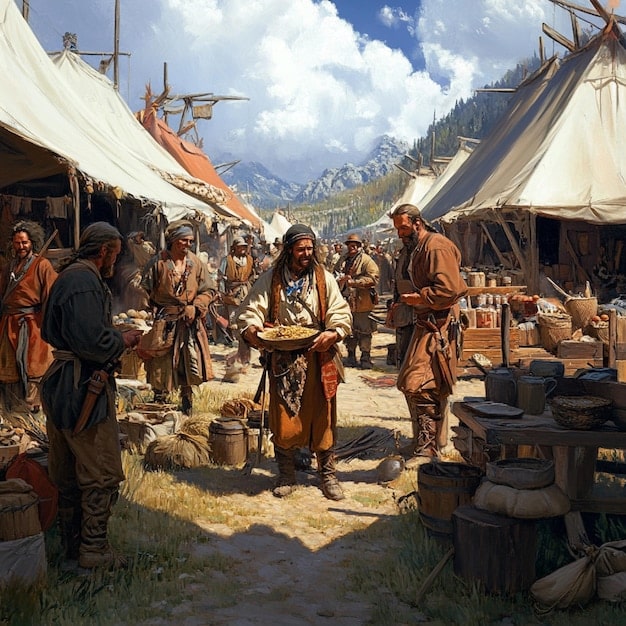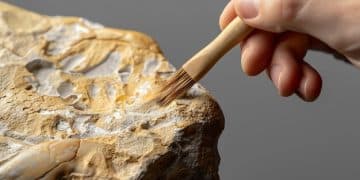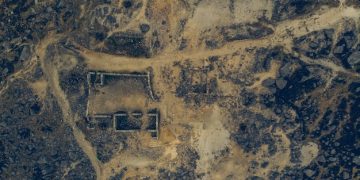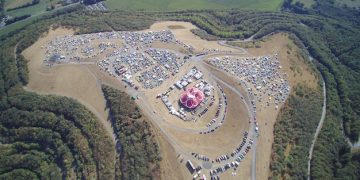Unearthing North America’s Past: Ancient Trade Routes & Archaeological Evidence

Ancient Trade Routes of North America: Evidence from Archaeological Discoveries Across the US unveil intricate networks connecting diverse cultures long before European contact, revealing sophisticated economic and social systems through artifacts and settlement patterns.
Imagine North America not as a land of isolated tribes, but as a continent crisscrossed by bustling ancient trade routes. Archaeological discoveries across the US are continuously unearthing evidence of these complex networks, revealing a vibrant past where goods, ideas, and cultural practices flowed freely. But what exactly did these ancient trade routes look like, and what treasures do they hold?
Exploring the Ancient Trade Routes of North America
The story of North America before European arrival is rich and complex, a tapestry woven with the threads of countless indigenous cultures, sophisticated trade networks, and innovative technologies. These ancient trade routes served as the economic and social lifelines, connecting communities and allowing for the exchange of goods, ideas, and cultural practices.
Key Archaeological Discoveries
Across the United States, archaeological digs have unearthed compelling evidence supporting the existence of extensive trade networks. These discoveries range from exotic raw materials found far from their source to distinctive artifacts that suggest cultural exchange and interaction.
- Obsidian Sourcing: Analysis of obsidian tools found at various sites has revealed their origin points, tracing back to specific volcanic sources hundreds of miles away.
- Copper Artifacts: The presence of copper objects, particularly from the Great Lakes region, in distant locations highlights the movement of valuable resources across vast distances.
- Shell Ornaments: Marine shells discovered in inland archaeological sites point to established trade routes connecting coastal and interior communities.

These archaeological findings, among others, provide concrete evidence of the extensive and sophisticated Ancient Trade Routes of North America: Evidence from Archaeological Discoveries Across the US, challenging earlier notions of isolated and self-sufficient native communities.
Major Trade Centers and Networks
Certain locations across North America emerged as vital trade centers, facilitating the exchange of goods and ideas. These hubs played pivotal roles in connecting various regions and enabling complex economic systems.
Cahokia: A Thriving Metropolis
Located in present-day Illinois, Cahokia was one of the largest urban centers in pre-Columbian North America. Its strategic location near the confluence of major rivers made it a hub for trade and cultural exchange.
The Chaco Canyon System
In the arid Southwest, the Chaco Canyon civilization developed an intricate network of roads and settlements that facilitated the movement of goods and people. This system connected distant communities and allowed for the distribution of resources across the region.
These centers were not simply marketplaces; they were places where cultures met, ideas were exchanged, and social connections were forged, contributing to the rich and dynamic history of Ancient Trade Routes of North America: Evidence from Archaeological Discoveries Across the US.
Goods and Commodities Exchanged
The Ancient indigenous Americans traded a diverse range of goods and commodities reflect the environmental diversity of North America and the ingenuity of its people. These items played essential roles in meeting the needs of communities across the continent.
Here are some of the most traded items:
- Foodstuffs: Corn, Beans and squash were traded.
- Raw Materials: Copper, Obsidian and salt were vital.
- Finished Products: Pottery, textiles and jewelry were exchanged through Ancient Trade Routes of North America: Evidence from Archaeological Discoveries Across the US.

The variety and volume of these goods indicate the sophistication of the economic systems that supported Ancient Trade Routes of North America: Evidence from Archaeological Discoveries Across the US.
Cultural Exchange and Its Impact
Beyond the exchange of goods, ancient trade routes also facilitated the transmission of ideas, technologies, and cultural practices, leading to significant cultural exchanges across North America. These exchanges played a crucial role in shaping the social and intellectual landscape of the continent.
Dissemination of Agricultural Practices
The spread of agricultural techniques, particularly the cultivation of corn, beans, and squash, accelerated the growth of settled communities and fostered increased cooperation and interaction among different groups. This is a key evidence from archaeological discoveries across the US.
Shared Artistic Motifs and Symbols
The presence of similar artistic motifs and symbols across geographically distant regions suggests a shared cultural understanding and a complex flow of knowledge and beliefs.
The cultural exchanges driven by Ancient Trade Routes of North America: Evidence from Archaeological Discoveries Across the US contributed to creating a vibrant and interconnected network of communities, each influencing and enriching the others.
Challenges and Controversies in Research
While archaeological discoveries offer invaluable insights into ancient North American trade routes, the research process is not without its challenges and controversies. These include issues of interpretation, preservation, and ethical considerations.
Interpreting Archaeological Evidence
Archaeological evidence can be open to multiple interpretations, and it is crucial to consider these different perspectives when reconstructing past events and interactions. This challenge requires interdisciplinary collaboration, incorporating knowledge from various fields such as anthropology, linguistics, and environmental science.
Protecting Sacred Sites and Artifacts
In many cases, archaeological sites are also considered sacred by contemporary indigenous communities, and these sites must be treated with the utmost respect and sensitivity. Ethical considerations must guide any research activities, involving consultation with indigenous stakeholders and respecting their cultural heritage.
Addressing these challenges is essential for ensuring that research on Ancient Trade Routes of North America: Evidence from Archaeological Discoveries Across the US contributes to a more comprehensive and respectful understanding of the continent’s past.
Advancements in Archaeological Methods
New technologies are revolutionizing the field of archaeology, enabling researchers to gather more detailed and accurate information about ancient trade routes. These advancements are helping uncover further evidence from archaeological discoveries across the US.
Remote Sensing Technologies
Techniques such as LiDAR (Light Detection and Ranging) and satellite imagery allow archaeologists to map and analyze large areas without disturbing the ground, detecting subtle features that might otherwise be overlooked.
Isotopic Analysis
By analyzing the isotopic composition of artifacts, researchers can determine their origin and trace their movement across trade networks, providing valuable information about the exchange of goods and resources.
These and other technological innovations promise to unlock new insights into Ancient Trade Routes of North America: Evidence from Archaeological Discoveries Across the US, rewriting our understanding of pre-Columbian history.
| Key Point | Brief Description |
|---|---|
| 🗺️ Network Existence | Extensive pre-Columbian routes for trade and cultural exchange. |
| 🏛️ Key Centers | Cahokia and Chaco Canyon were bustling trade metropolises. |
| 🔄 Traded Goods | Diverse items like foods, materials, and crafts were exchanged. |
| 🤝 Cultural Impact | Routes fostered the spread of farming and shared cultural symbols. |
Frequently Asked Questions
Chaco Canyon was a major trade center, connecting several communities through a complex road network. Artifacts found demonstrate the trade of goods like turquoise and pottery within the Ancient Trade Routes of North America: Evidence from Archaeological Discoveries Across the US.
Common trade goods included foodstuffs such as corn and beans, raw materials like copper and obsidian, and finished products such as pottery, textiles, and jewelry, moving along extensive trade routes.
These routes facilitated the spread of agricultural practices, artistic motifs, and technological innovations, fostering cultural interconnectedness. Discoveries are proof of complex pre-Columbian societies and long-distance interactions during the Ancient Trade Routes of North America: Evidence from Archaeological Discoveries Across the US.
Challenges include interpreting archaeological evidence, preserving historical sites, and adhering to ethical research practices, particularly regarding indigenous cultural heritage and sacred sites.
Remote sensing technologies, isotopic analysis, and advanced dating methods are revolutionizing research. These advancements enhance our understanding by providing more detailed insights into the scale and nature of the trade in Ancient Trade Routes of North America: Evidence from Archaeological Discoveries Across the US.
Conclusion
The ancient trade routes of North America reveal a rich tapestry of interconnected societies, challenging the long-held notion of isolated tribes. Archaeological discoveries across the US provide tangible evidence of these complex networks, highlighting the ingenuity and resourcefulness of the continent’s indigenous peoples.





